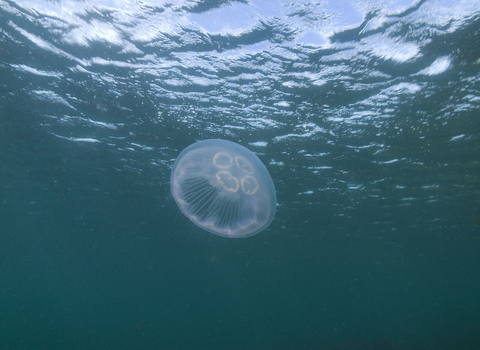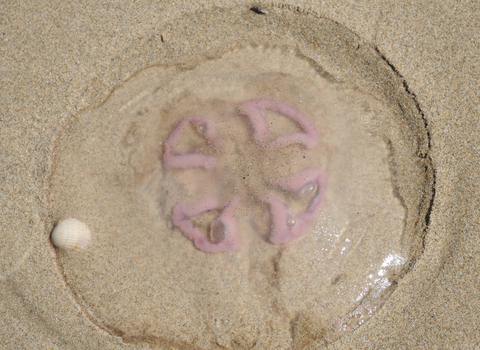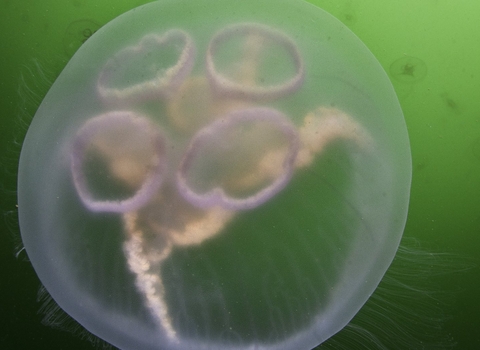
Moon Jellyfish ©Paul Naylor www.marinephoto.co.uk

Moon jellyfish by Amy Lewis

Moon jellyfish by Alexander Mustard/2020VISION
Moon jellyfish
The moon jelly is the most common jellyfish in UK seas, often washing up on our beaches. No need to worry though - it doesn't sting humans.
Scientific name
Aurelia auritaWhen to see
January to DecemberSpecies information
About
The moon jellyfish, or moon jelly, is found throughout the world's oceans. Around the size of a plate, it is recognisable by the four circles visible through the translucent white bell. These four circles are gonads, the reproductive organs located at the bottom of the stomach, and they are normally purple in colour. Moon jellies are common in UK seas and are often found washed up on shore. Jellyfish are 95% water and have no brain, blood or heart.Moon jellies have short, delicate tentacles that hang down from the sides of the bell. They catch their plankton prey using a layer of mucus over their bells before passing the microscopic meals into their mouth parts using special tentacles.
